How to supercharge your barbecue game for summer
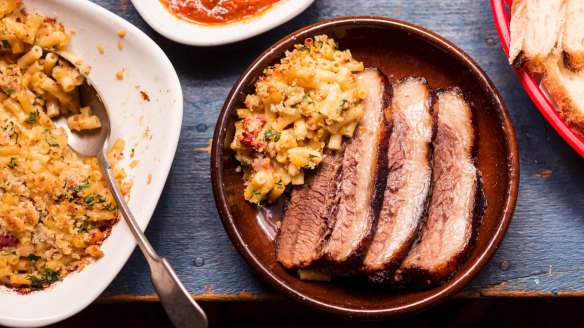
- Best meat cuts for the barbecue: sirloin, lamb cutlets, T-bone, dry age rib-eye on the bone
- Neil Perry's baby back ribs with barbecue sauce
- Frank Camorra's barbecued beef brisket served with macaroni cheese
Barbecue. Barbeque. BBQ. Barbie. However you want to spell or abbreviate it, the outdoor grilling, smoking and flaming of food has undergone a massive growth in popularity over the last five years. No longer only the realm of dads rocking a "kiss the cook" apron and cobwebbed gas bottle, the backyard barbie landscape has become a place of Japanese charcoal, American smokers, Greek souvla and Italian spits.
"Australia's multiculturalism has definitely expanded the domestic barbecue world" says Nick Angelucci, owner of Leichhardt store BBQAroma which specialises in high-end barbecues and their never-ending range of accessories. "All cultures share a love of cooking with charcoal. People are also now more conscious of where their food is coming from. Many of our customers don't want to eat a fast-food burger dripping with fat from god knows what part of a cow. They want to grill at home using meat from a butcher they trust."
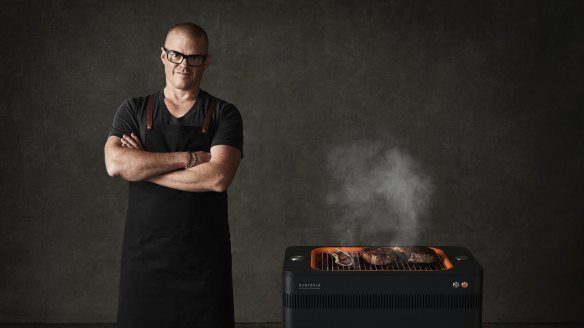
Data from Roy Morgan Research shows that 5.8 million Australian households (almost two-thirds of total households) owned a barbecue in 2015, an increase of some 400,000 households since 2011. The majority of household barbecues are the general purpose gas variety, however there has been a considerable increase in American smokers for home use over the past five years, says Tony Spencer, who owns and operates three BBQs Plus stores in Melbourne.
"People are visiting American-style barbecue restaurants and festivals and asking 'Well, what do I need to do to cook brisket or pork like that?'. We have a large base of customers who are in the store once a month buying charcoal, meat rubs and different types of smoking woods. They're really into trying new stuff."
"Barbecuing is not a trend or a fad," says Angelucci. "It's something people do because they crave the flavour and experience. Food barbecued with care takes on a complexity like aged cheese or great wine. You can also say 'I did that'. It's food for the soul."
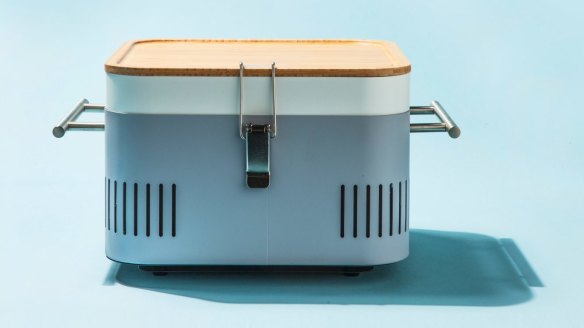
With the season of backyard cricket, verandah beers and sausage sangers upon us, here's a guide to the three major types of barbecues available today plus all the tips, tricks and accessories to enhance your grill game this summer.
American-style 'low-and-slow' barbecue
What is it?
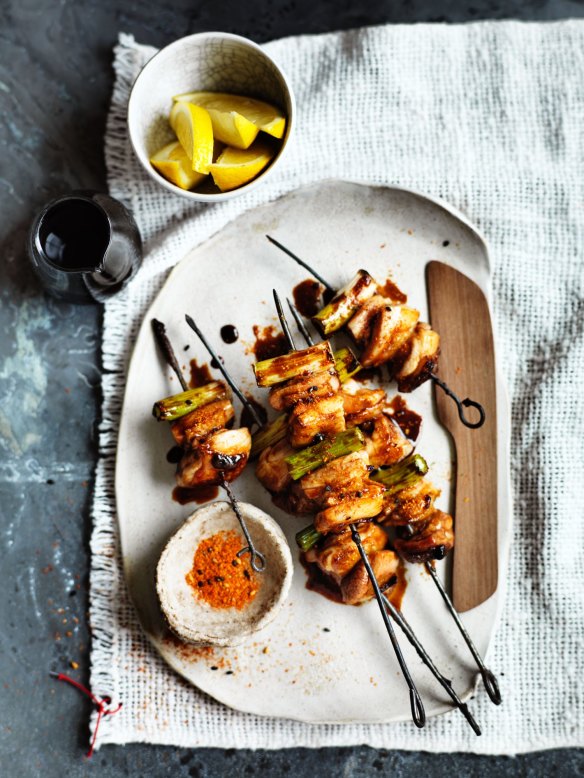
Defining American barbecue, which is a lifestyle of trucker caps and overalls as much as it is a method of cooking, has been the subject of books, doctorates and many arguments, particularly in America's south. Is the saucy pulled pork of Carolina a more authentic form of American barbecue than dry-rubbed brisket from Texas? Who's to say? Broadly, we're talking meat cooked by indirect heat (that is, not touching coals or flame) in an enclosed smoker for a long time.
What is it good for?
Large "secondary" cuts of meat with intramuscular fat that slowly melts to know its silky place in the world. Whole chooks also work a treat. If you're catering a family reunion, local footy final, or just a backyard get-together with mates, low-and-slow barbecue has you covered. And if there's only two of you eating, slow cooking brisket on the weekend can provide sandwiches on Sunday, ragu for Monday and a filling for Taco Tuesday. Heck, you might as well add it to fried eggs at breakfast, too.
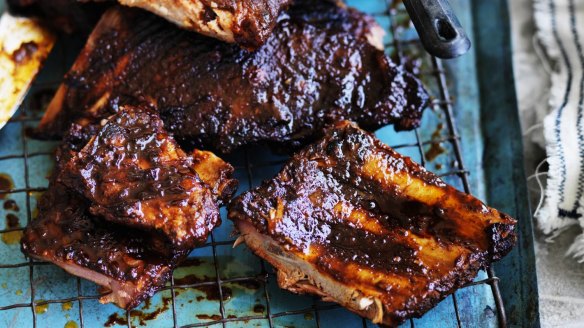
What do I need to get started?
When American-style barbecue gained traction in Australia about six years ago, the idea of smoking a five kilogram hunk of beef brisket or whole pig at home was pretty much out of the question. This was something left to barbecue die-hards willing to invest considerable cash and time into an offset smoker.
An offset smoker is fuelled by charcoal or wood or a combination thereof that burns in a little firebox attached to the side. Heat and smoke travel from the firebox and into a cooking chamber to work their magic on racks of beef ribs, pork shoulder, chicken and whatever else you fancy stacking. Offset smokers also require considerable effort to keep going.
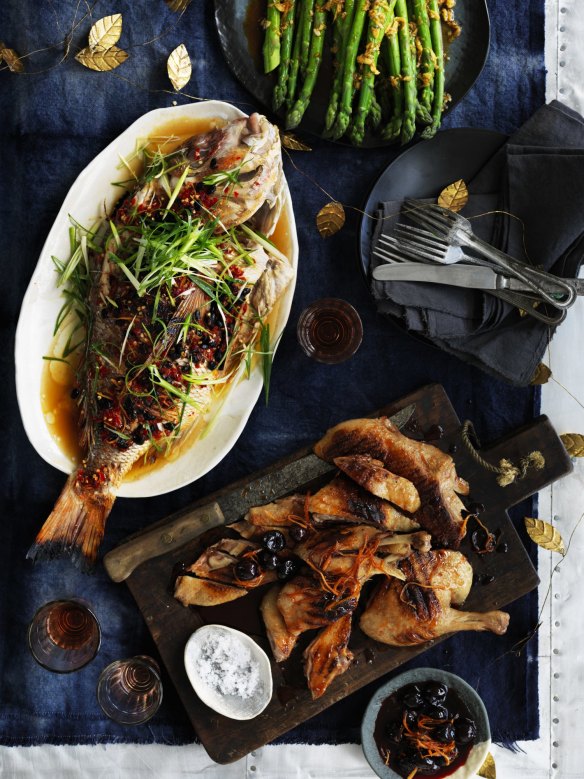
"You need to keep tending that fire every half hour to an hour," says Spencer. "This isn't brilliant for sleep when you're dealing with a 12-hour cook time." Mercifully, the barbecue gods created pellet grills.
"There's certainly people who will say an offset smoker is more traditional, and that a pellet grill is cheating," says Angelucci. "Offset smoking has a romance to it, and it does cook extremely well, but the reality is that many us don't have the luxury time to give an offset smoker the attention it needs."
Pellet grills work in a similar way to an offset smoker, but they're fuelled by wood pellets automatically fed into a firebox at regular intervals. A combustion fan helps keep the temperature consistent and pellets are available in all sorts of varieties to impart different flavours on the meat - walnut, apple and whiskey to name a few.
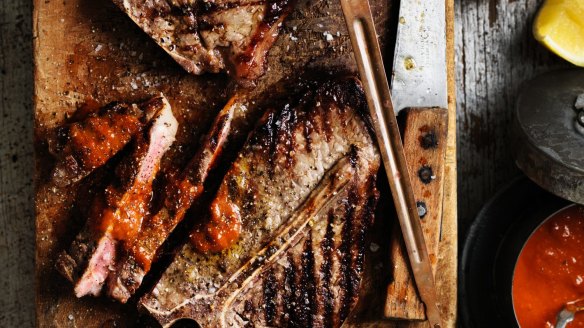
Any grill store worth its celery salt will stock a range of offset and pellet smokers for low-and-slow cooking. At this juncture, it's also necessary to mention ceramic and kamado-style barbecues from American brands such as Big Green Egg and Primo. These charcoal-fuelled cookers are brilliant for direct grilling, but air vents and a heavy lid means the internal temperature can be adjusted to cook Naples-style pizza at ultra high-heat or American barbecue low and super-slow.
What kind of prices are we talking?
A bit more than your standard issue Weber, however, like a beautiful pair of leather boots, a quality barbecue is something you want to spend decent money on, maintain and cherish forever. You're looking at almost $1000 for an entry level offset smoker or pellet grill that's not going to need replacement parts after six months. Louisiana, Yoder and Green Mountain are respected brands. A Big Green Egg will set you back $999 for the smallest model, right up to $4999 for the XX Large.
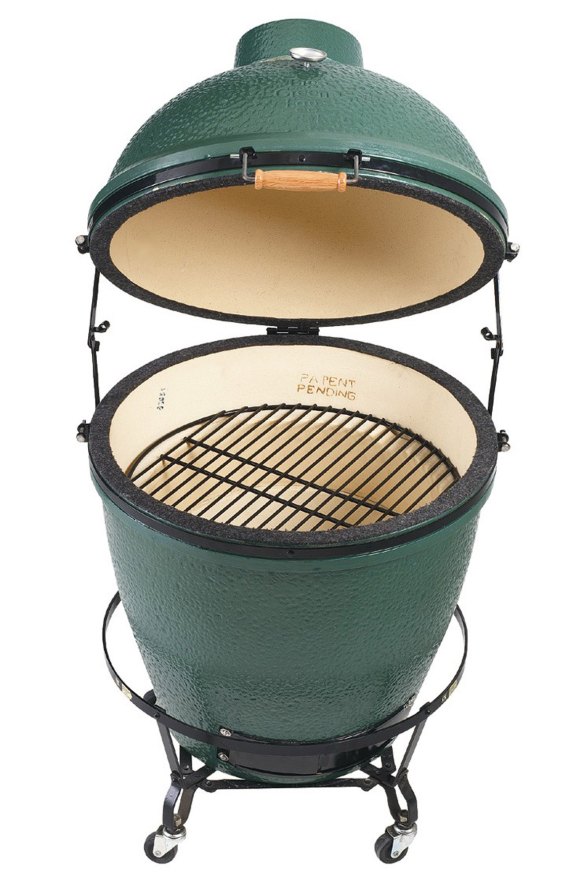
Any cooking tips?
"I always ask customers what they're going to do for their first smoker cook," says Spencer. "Instead of saying 'I thought I would experiment with some chicken wings and have few cold beers,' they tell me they're going to cook a five-kilo Black Onyx brisket that cost $150. And good on 'em, I suppose, but that's not where I would start. Try a few smaller, cheaper items first to get to know your grill and how it works."
How do I take it to the next level?
Australian manufacturers such as Red Dirt, Radar Hill and Manhornes make handsome smokers for home and competition use. You can expect to part with at least $3000 for one of these boutique bad boys.
Charcoal grilling
What is it?
A broad church of barbecue where food is cooked over charcoal, a la the original Weber Kettle. Simple. Ancient. Delicious. International charcoal-grilled examples include Japanese yakitori and Turkish kebabs. Food releases juice and fat as it cooks, dripping and hissing onto the hot charcoal and releasing aromatics that transfer back into your dinner.
What is it good for?
Charcoal grilling gives a unique smoky flavour to food that electric and gas grills only dream of. It's the method of cooking high-end meat deserves.
"A charcoal grill will lift steak to the next level," says Angelucci. "It will take it to that point where you go 'wow'. I don't think throwing a steak in a frypan with butter and sage is enough for people's palates any more. It's not complex enough."
Charcoal grilling also works wonders on vegetables, chicken, prawns, sausages and whole fish. "More people are understanding that a barbecue isn't just a cooking device, says Angelucci. "A barbecue is a flavour enhancer, too."
What do I need to get started?
A kettle barbecue will do you, and some good quality natural charcoal (that is wood burned in oxygen deficient conditions to leave mostly carbon, by the way). A hand-held charcoal chimney will help get the black stuff properly hot – just transfer it to the barbecue using tongs when ready.
Stainless steel barbecues made by Italian brand Ferraboli are also ace, especially the models with multiple levels that can be adjusted to suit the temperature you need for different meats. The big must have for chefs and food-lovers in 2018, however, is the Japanese Konro grill. They're a hollowed ceramic brick the size of a planter box and you can find one in many hatted restaurants and now quite a few households.
Leigh Hudson is the founder and managing director of Chef's Armoury, which has Japanese cookware stores in Melbourne and Sydney. He has been importing Konro grills into Australia for more than a decade.
"We've seen a big increase recently of people cooking with charcoal and using our Konros," says Hudson. "It's a cycle: a chef buys one, puts it on Instagram, people see it, buy one and post it on Instagram themselves. Then someone else sees it and the process repeats."
If you're going to invest in a Konro, you probably want to purchase some binchotan charcoal too. Harder and denser than standard charcoal, binchotan is a favourite with yakitori masters for its clean burning properties. It will also retain heat for many hours within the insulated walls of a Konro.
"The only way to cook great yakitori is on good charcoal," says Hudson. "I also use my home Konro for mushrooms, lamb cutlets, wagyu and blue mackerel. For the mackerel, I give the fish a good scrub, split it in half, take the guts out and dry it with salt under a paper towel for four hours. Grill for two minutes either side and it's one of the best things you'll ever eat."
What kind of prices are we talking?
A medium Konro costs $385 from Chef's Armoury, however you may need to add yourself to a waiting list to score one, especially this close to Christmas. (They make a very, very good present.) Otherwise, you should be able to find a stainless steel shichirin charcoal barbecue for around $75 in specialty barbecue stores. The shichirin is perfect for tabletop yakitori with friends and family.
Other charcoal grills range from $25 at Middle Eastern grocers up to $5000 for a Yoder brand big-rig. The portable Heston Blumenthal charcoal-fuelled "Cube" is a nifty buy at $199.
The price of charcoal itself also varies. 10 kilograms of Clean Heat brand lump charcoal might cost you $25 while you can expect to pay around $270 for the same amount of Japanese binchotan.
Any cooking tips?
Make sure your charcoal is hotter than Hades before you start cooking, otherwise the dripping fat will smoke and smoulder rather than sizzle and hiss. Depending on the density and variety of your charcoal, it could take more than an hour for it to reach optimum temperature so patience is key.
If cooking on a Konro, Hudson recommends having a spray bottle of sake at hand to give a boozy spritz to your meat. "In Japan, almost every bit of protein that touches the grill gets a little spritz of sake and it really enhances the taste."
How do I take it to the next level?
Learn how to break down your own chicken for yakitori – there's more to chook skewers than wings and thighs. Chicken and Charcoal, the Phaidon-published cookbook from cult Hong Kong yakitori restaurant Yardbird, offers excellent guidance on the matter.
Gas barbecue
What is it?
The classic Aussie barbecue that's the pride of back decks from coast to coast. They can be portable grills to take camping or massive hunks of metal that wouldn't be out of place at NASA mission control.
What is it good for?
Cooking with gas doesn't have the romance (and many barbecue purists would say taste) of cooking with charcoal or wood, but gee it's convenient.
What do I need to get started?
Patience to deal with barbecue salesmen at major retailers on the weekend, predominantly.
Spencer believes the Weber Genesis II LX is the most advanced gas barbecue on the market. "It cooks beautifully and comes iGrill 3 ready. The iGrill 3 will talk to your smartphone and let you know the internal temperature of up to four different items grilling." As for built-in gas barbecues, Spencer reckons it's hard to beat the BeefEater range for longevity and value.
Any cooking tips?
"A lot of people tell me gas barbecues are more convenient than charcoal but you still need to give most of them 10-15 minutes to become hot enough," says Angelucci. "I also find that a gas barbecue won't do full justice to meat unless you pre-treat it with rubs and specialty salts and all that stuff."
Angelucci recommends using a cast iron skillet on a gas barbecue because it's usually better at conducting heat than the hotplate, or a GrillGrate to give you those sought after grill marks for flavour and aesthetics.
What kind of prices are we talking?
There are attractive, slightly retro-looking gas barbecues in the Everdure by Heston Blumenthal range that start at $799 for a free-standing two-burner. You're looking at $2499 for a Weber Genesis II LX E440 Premium (it does sound like a type of Terminator robot, yes) although less expensive models are available from around $1299.
How much you're going to spend on a gas barbecue really depends on how often you plan to use it, how many people you'll be feeding and how much you want to impress your neighbours. The price range is significant. If you're simply after something small and unassuming that can sit on an apartment balcony, check out the Weber Baby Q line with barbecues that start at $339.
How do I take it to the next level?
Turn your barbecue into a Brazilian churrasco party. The Carson Rodizio kit is adjustable to fit most barbecues (gas, charcoal, kettle, Kamado) with six rotisserie skewers spinning over direct heat with the help of a whirring motor. It's $779 but threading sword-sized skewers with prawns, beef, chorizo and all manner of vegetables is a lot of bloody fun. Finishing your rotisserie session with a whole pineapple is recommended.
Appears in these collections
- More:
- Restaurant news
From our partners
Original URL: https://www.watoday.com.au/goodfood/eating-out/how-to-supercharge-your-barbecue-game-for-summer-20181109-h17p5a.html
